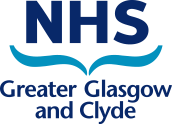2.5. Hypertension and heart failure
The choice of therapeutic class for the management of hypertension is dependent on individual patient parameters. See the NHSGGC Guidelines for the Management of Hypertension, available on the Clinical Guidelines store on StaffNet.2.5.1. Vasodilator antihypertensive drugs

Restrictions:
Restricted to initiation and prescribing by specialists in the Scottish Pulmonary Vascular Unit or similar specialists.

Restrictions:
Restricted to initiation and prescribing by specialists in the Scottish Pulmonary Vascular Unit or similar specialists. Use in the reduction of the number of digital ulcers in patients with systemic sclerosis and ongoing digital ulcer disease and for pulmonary arterial hypertension WHO class II is non-Formulary.

Restrictions:
Iloprost nebules are restricted to use as an alternative in patients receiving other forms of prostacyclin treatment and to use by specialists in the Scottish Pulmonary Vascular Unit or similar specialists.

Restrictions:
Use as monotherapy or in combination is indicated for the long-term treatment of pulmonary arterial hypertension in adult patients of World Health Organisation Functional Class II to III is restricted to initiation and prescribing by specialists in the Scottish Pulmonary Vascular Unit or similar specialists.

Restrictions:
For Formulary indications and restrictions, see Prescribing Notes.
Prescribing Notes:
Chronic thromboembolic pulmonary hypertension (CTEPH): Treatment of adult patients with World Health Organisation (WHO) functional class II to III with inoperable CTEPH or persistent or recurrent CTEPH after surgical treatment to improve exercise capacity. It is restricted to initiation and prescribing only by specialists in the Scottish Pulmonary Vascular Unit for use in patients in whom a PDE5 inhibitor is inappropriate, not tolerated, or ineffective.
Pulmonary Arterial Hypertension (PAH): Restricted to use as a PAH-specific monotherapy as an alternative treatment option to endothelin receptor antagonist (ERA) monotherapy in adult patients with PAH of WHO FC II to III. It is restricted to initiation and prescribing by specialists in the Scottish Pulmonary Vascular Unit or by similar specialists.

Restrictions:
Use for pulmonary arterial hypertension (PAH) is restricted to use by specialists in the Scottish Pulmonary Vascular Unit for combination therapy in a sub-population of patients with PAH specifically those with WHO FC III who are insufficiently controlled with an ERA and a PDE-5 inhibitor and who would be considered for treatment with inhaled iloprost.

Restrictions:
Restricted to specialists working in the Scottish Pulmonary Vascular Unit or similar specialists and by physicians experienced in the management of pulmonary vascular disease.

Restrictions:
The treatment of adults with pulmonary arterial hypertension (PAH) classified as World Health Organisation functional class (WHO-FC) II and III, to improve exercise capacity is restricted to prescribing by specialists in the Scottish Pulmonary Vascular Unit or similar specialists.
2.5.2. Centrally acting antihypertensive drugs
2.5.3. Adrenergic neurone blocking drugs
2.5.4. Alpha-adrenoceptor blocking drugs
2.5.5. Drugs affecting the renin-angiotensin system
Any ACE Inhibitor or angiotensin-II antagonist may cause deterioation in renal function. Urea and electrolytes should be checked prior to initiation and within 7 days of commencing therapy or a change in dose.2.5.5.1. Angiotensin-converting enzyme inhibitors
Prescribing Notes:
Excludes combination products. Perindopril arginine remains non-formulary.
2.5.5.2. Angiotensin-II receptor antagonists
There are no indications where angiotensin-II receptor antogonists should be used as first-line therapy and they should only be used as second-line agents in patients who develop a significant cough with ACE inhibitors.Restrictions:
Candesartan should only be used as a second line agent in patients who develop a significant cough with ACE inhibitors. Use as add-on therapy with ACE inhibitors for heart failure and left ventricular systolic dysfunction is restricted to initiation by specialists.
Restrictions:
Losartan should only be used as a second line agent in patients who develop a significant cough with ACE inhibitors.
Restrictions:
Restricted to second line use in patients with a significant cough on an ACE inhibitor. The Formulary also excludes combination preparations.

Restrictions:
Restricted to initiation by the specialist heart failure multidisciplinary team in patients with heart failure that meet all the criteria in the NHSGGC heart failure guideline, click here
Prescribing Notes:
- Patients commenced on this medicine should have access to a multidisciplanary heart failure team
- If the patient is already on an ACE inhibitor, the ACE inhibitor should be stopped for 36 hours before initiating sacubitril/valsartan to minimise the risk of angioedema.
- Guidance on initiation and up-titration of sacubitril and valsartan can be accessed here
Restrictions:
Restricted to second line use only for hypertension in patients with a significant cough on an ACE inhibitor.
Prescribing Notes:
The use in cardiovascular prevention or type 2 diabetes mellitus with documented target organ damage is not recommended by SMC and is non-Formulary. The Formulary also excludes combination products.
Restrictions:
Restricted to second line use in patients with a significant cough on an ACE inhibitor. Restricted to second line alternative in patients following myocardial infarction with evidence of left ventricular systolic dysfunction who cannot tolerate ACE inhibitors.
Prescribing Notes:
Excludes combination products, except combination of sacubitril and valsartan.
2.5.5.3. Renin inhibitors
2.5.6. Other medicines beneficial in heart failure
Prescribing Notes:
Refer to the NHSGGC Heart Failure treatment guideline for advice on initiation and monitoring.
For use in Chronic Kidney Disease, see section 7.5
Prescribing Notes:
Refer to the NHSGGC Heart Failure treatment guideline for advice on initiation and monitoring.
2.5.7. Cardiomyopathy

Restrictions:
Restricted to specialist use for treatment of adult patients with symptomatic (New York Heart Association, NYHA, class II to III) obstructive hypertrophic cardiomyopathy (oHCM).

Restrictions:
Restricted to specialist use only in the treatment of wild-type and hereditary transthyretin amyloidosis in adults with cardiomyopathy (ATTR-CM).

